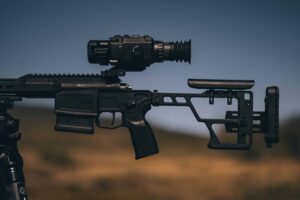
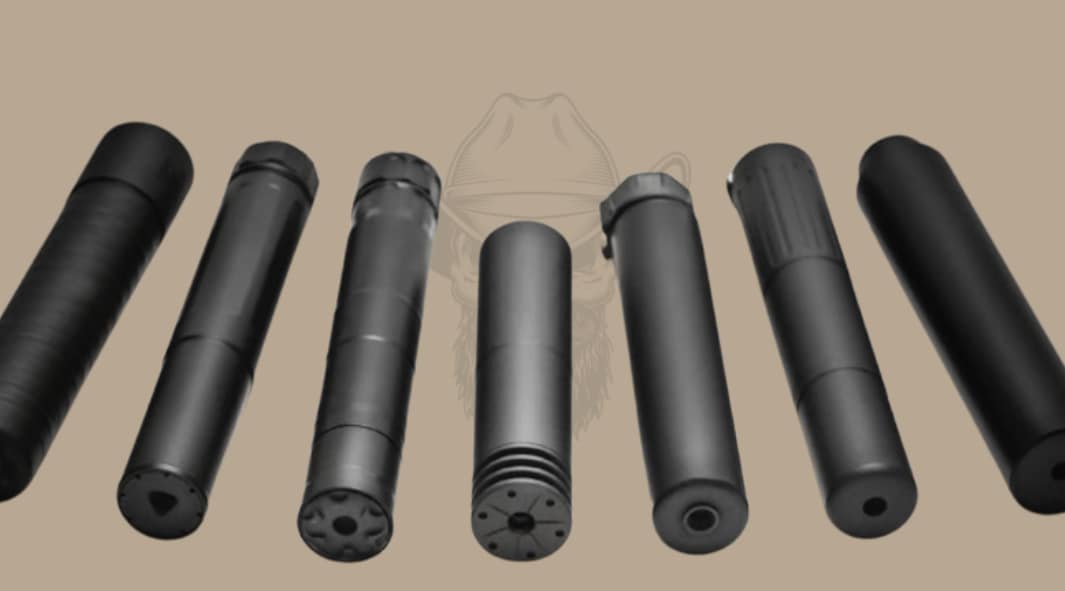
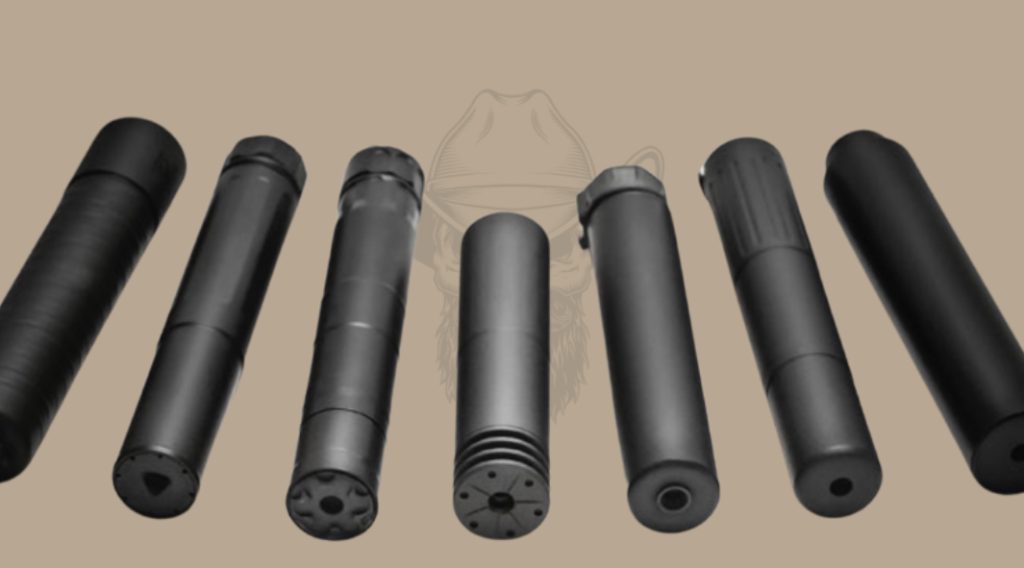
You may ask, should I buy a suppressor? YES! That was easy! In all seriousness, When considering whether to buy a suppressor, it’s essential to understand the full range of benefits and the steps involved in making a purchase. Suppressors, also known as silencers, are invaluable in various shooting applications, from home defense to hunting. They are instrumental in protecting your hearing by reducing the decibel level of gunfire, making your shooting experience safer and more comfortable. Additionally, suppressors can enhance the accuracy of your rifle by reducing recoil and muzzle rise, allowing for more precise follow-up shots. And, of course, they can make your time at the range even more enjoyable, as the reduced noise can create a more relaxed and focused environment.
Many people are still unfamiliar with suppressor ownership, leading to common misconceptions. One of the most frequent questions we receive is, “Are silencers illegal?” The answer is no. Contrary to the belief that silencers are reserved for military or law enforcement organizations, they are legally available to civilians in 42 states. Currently, more than 2.5 million suppressors are legally owned by law-abiding gun owners across the country. With a wide array of manufacturers and distributors, finding the right suppressor to suit your needs has never been easier.
However, if you’re new to the world of suppressors, the selection and purchasing process can seem daunting. There are several factors to consider, such as whether to choose a direct thread or quick disconnect (QD) model, whether to opt for a dedicated or multi-caliber suppressor, and which materials—aluminum or titanium—would best suit your needs. This guide will walk you through the advantages and disadvantages of different types of suppressors, the steps to purchase one legally, and whether building your own might be a viable option for you.
Suppressors, often misunderstood and stigmatized, suffer from a poor reputation due to widespread misinformation. Contrary to popular belief, suppressors are not just tools for criminals. In reality, they are legally owned by millions of law-abiding citizens, and the data supports their safe use. A 2019 report from Reason.com revealed that only 0.003% of legally owned suppressors are used in crimes each year. Despite Hollywood’s portrayal of suppressors as nearly silent tools for assassins, they do not completely silence a firearm. For instance, an AR-15 with a 16” barrel firing M193 ammunition produces around 167 decibels (dB). With a suppressor, that sound may be reduced to 136 dB—still louder than a rock concert. The distortion by Hollywood and the rhetoric from some lawmakers contribute to the misconception that suppressors are dangerous, when in fact, they serve many practical purposes.
Hollywood has long misrepresented suppressors. A prime example is the mall shooting scene in John Wick: Chapter 2, where a suppressed gunfight unfolds in a crowded space without drawing attention from bystanders.
 While this makes for entertaining cinema, it’s far from reality. Suppressors do reduce the noise level of gunfire to a point that is considered “hearing safe,” but they do not render a firearm practically silent. To put this in perspective, a jackhammer and a chainsaw both fall under the decibel threshold of being considered hearing safe for short periods, but they are far from quiet. Similarly, while a suppressed AR pistol in 5.56 with a 7” barrel may be quieter, you would still need hearing protection when shooting for extended periods.
While this makes for entertaining cinema, it’s far from reality. Suppressors do reduce the noise level of gunfire to a point that is considered “hearing safe,” but they do not render a firearm practically silent. To put this in perspective, a jackhammer and a chainsaw both fall under the decibel threshold of being considered hearing safe for short periods, but they are far from quiet. Similarly, while a suppressed AR pistol in 5.56 with a 7” barrel may be quieter, you would still need hearing protection when shooting for extended periods.
That said, there are scenarios where a suppressed firearm approaches the quiet levels often exaggerated in movies. For example, a suppressed .22 caliber rifle using subsonic ammunition can be quite low in noise—about as close to “Hollywood quiet” as you can get. However, even then, you will still hear the firearm being discharged.
There’s also a common misconception about the licensing requirements for suppressors. While it’s true that purchasing a suppressor involves more paperwork and waiting than buying a firearm, you do not need a special license to own one. The licensing requirement applies only to the dealer from whom you purchase the suppressor. As long as you can legally own a firearm, you can legally own a suppressor.
When you attach a suppressor to your firearm, it will indeed have an impact on its performance, but this is typically a positive effect. A suppressor effectively lengthens the barrel of the firearm, allowing the expanding gases more time to push the bullet before it exits the muzzle. This can result in a slight increase in velocity, though not to a degree that will dramatically change performance. The important takeaway is that a suppressor will not negatively impact your firearm’s velocity.
Suppressors are legal under federal law but are regulated by the National Firearms Act of 1934. This additional regulation sometimes leads to confusion, with some people mistakenly believing that suppressors are illegal. However, this is not the case for most Americans. Suppressors are legal to own in 42 states. The eight states where they are prohibited include California, Delaware, Hawaii, Illinois, Massachusetts, New York, New Jersey, and Rhode Island, as well as the District of Columbia. As long as you reside in one of the 42 states where suppressors are legal and follow all local, state, and federal laws, you can own one without issue.
Moreover, suppressors are also legal for hunting in 40 of these states, with Connecticut and Vermont being the exceptions. Fortunately, the attitude toward using suppressors for hunting has been shifting positively in recent years, with 18 states legalizing hunting with a suppressor since 2011. If you’re a hunter in one of the remaining holdout states, advocating for change with your local representatives could help move things in the right direction.
A common myth is that suppressors are expensive and have a short lifespan. While suppressors were indeed made from less durable materials in the early 20th century and required frequent replacement, modern suppressors are built to last. Today’s suppressors use high-strength baffles that can withstand tens of thousands, if not hundreds of thousands, of rounds. With proper care and maintenance, your suppressor could easily outlast you—a testament to the durability and value of these devices.
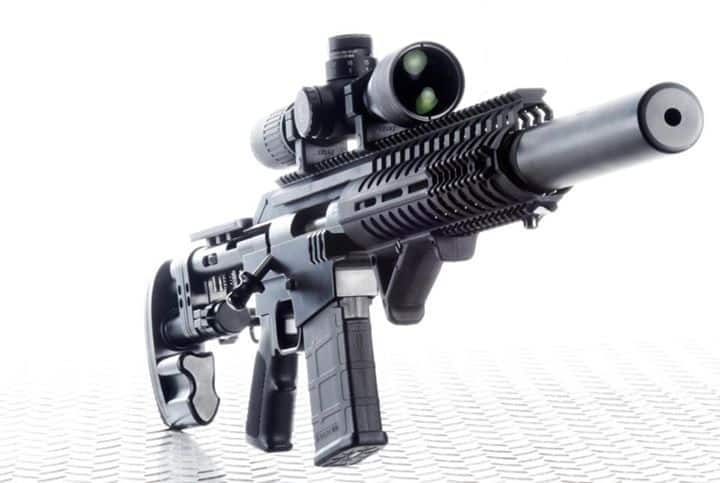
Silencers offer more than just a cool factor. One of their primary benefits is hearing protection. Regular exposure to gunfire, even with hearing protection, can damage your hearing over time. Silencers help reduce the noise, making shooting more comfortable and safer for your ears. In many European countries, silencers are required for hunting to minimize noise pollution near residential areas. In the U.S., they can help hunters avoid disturbing nearby communities and improve their chances of success by reducing the likelihood of scaring off game. Additionally, silencers can reduce felt recoil, making firearms more manageable and enjoyable to shoot, especially for beginners.
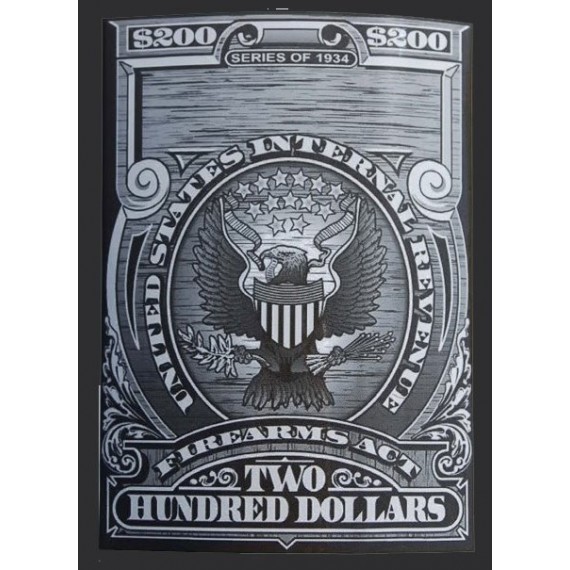
Silencers are regulated items under the National Firearms Act (NFA), meaning you’ll need to pay a $200 tax stamp to legally own one. This tax is separate from the purchase price of the silencer and involves completing a Form 4 application, undergoing a background check, and submitting fingerprints and a photo.
When selecting a silencer, consider several factors:
Answering these questions will help you narrow down your options and find a silencer that meets your needs.
A dedicated silencer is optimized for a specific caliber, offering maximum sound suppression. For example, a silencer designed for 5.56mm NATO will be more effective at reducing noise for that round than a multi-caliber option. However, a multi-caliber silencer offers versatility, allowing you to use it with different firearms and calibers. While it may not be as effective as a dedicated model, it can save you money by eliminating the need for multiple silencers and tax stamps.
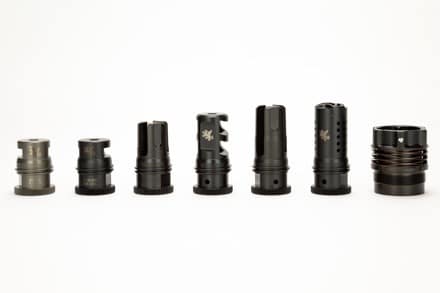
There are two primary methods for attaching a silencer: direct thread and quick disconnect (QD). A direct thread silencer screws directly onto the firearm’s barrel, offering a stable connection that’s less prone to misalignment. However, it can be cumbersome to attach and remove, especially if the barrel is hot. A QD silencer, on the other hand, attaches to a compensator or flash hider, allowing for quicker installation and removal. While more convenient, QD silencers may be less stable over time, potentially leading to accuracy issues or damage.
Buying a silencer can be a complex process, but it’s manageable with the right information. Here’s a simplified overview:
If you’re submitting your Form 4 through a trust, you might notice that processing times appear slightly longer. However, this is mainly because the ATF has focused on clearing the backlog of individual applications first. New trust applications are also being processed quickly, often within days. These faster approval times have made purchasing and owning suppressors more accessible than ever before. If you’re considering getting a suppressor, now is an excellent time to do so with the reduced wait times.
Yes, it is possible to build your own silencer, but it requires additional steps, including completing a Form 1 application and obtaining a tax stamp before beginning construction. Building your own silencer can be cheaper, allows for customization, and typically has a shorter approval process.
Filing as an individual means you are the sole owner of the silencer, with no option to transfer it without following the proper legal process. Filing as a trust allows multiple people to legally possess and use the silencer, making it a more flexible option, especially if you want to share ownership or ensure the silencer can be inherited.
Despite the misconceptions and regulatory hurdles, silencers are valuable tools that enhance the shooting experience by protecting hearing, reducing noise pollution, and making firearms more enjoyable to use. Whether you decide to buy or build, there’s never been a better time to own a silencer. While the process may seem daunting, the rewards are well worth the effort, making a silencer a unique and highly satisfying addition to your firearms collection.